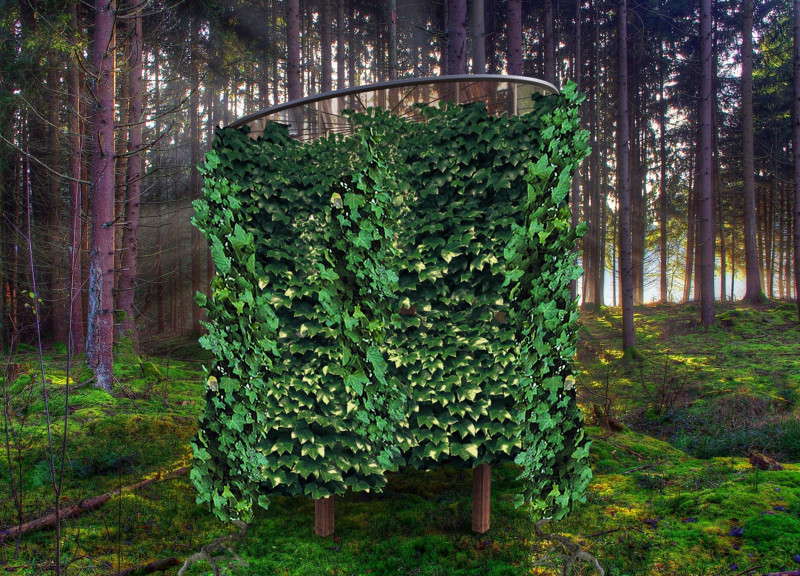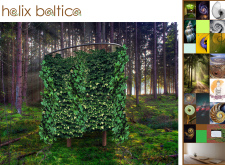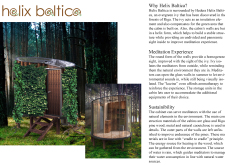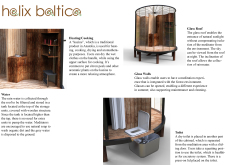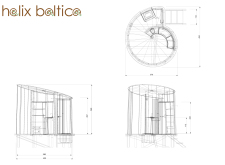5 key facts about this project
Helix Baltica is located in Riga and focuses on establishing a deep connection between its users and the natural landscape surrounding it. The design features a helix structure that balances functionality and serves as a space for meditation. The cabin is intended to integrate with nature rather than compete with it, allowing for a tranquil escape.
Design Concept
The distinctive helix-shaped walls play a vital role in the architecture. They offer structural support while providing expansive views that enhance the meditation experience. This unique form fosters openness, encouraging occupants to engage fully with the interior space and the environment outside.
Material Integration
One key element of the design is Hedera Helix Baltica, an evergreen ivy sourced from nearby forests. This ivy not only contributes to the visual charm of the cabin but also functions as an effective insulator, helping to regulate temperature. By including this vegetation, the design establishes a close relationship with the natural world, creating a feeling of connection between the inside and outside spaces.
Local Resources
The cabin incorporates Riga pine as a primary building material. Using locally sourced wood reflects an emphasis on regional resources and sustainability. The exterior surfaces are intentionally left unfinished, enhancing durability and fitting in with the natural surroundings. This choice also highlights the project’s commitment to an eco-friendly approach.
Functional Spaces
The interior layout is designed with user experience in mind, providing clear areas for meditation and sanitation. A dry toilet is positioned away from the meditation area and is separated by a sliding door for privacy. Natural light fills the space through large glass walls and a glass roof, allowing users to see outside while maintaining a sense of seclusion.
The design also addresses water management with a roof that collects rainwater. This system filters and stores the water, promoting sustainable practices and encouraging occupants to be mindful of their consumption.
Completing the design is the inclusion of a “kuzine,” a traditional heating and cooking appliance. It offers warmth and cooking capabilities while adding an element of aroma to the environment. This feature enriches the overall sensory experience and contributes to the cabin's functional character.


